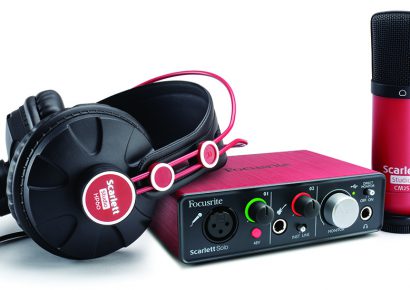Let’s start by running through the front panel of the Red 8Pre. What this offers is the ability to draw on controls and information from each of the eight microphone preamps one at a time so you can get as much information as possible right on the front panel. There are three colour screens, each showing a range of features like metering, volume controls, gain settings and suchlike. Eight selection buttons allow you to choose the preamp you wish to adjust. They have a great feel to them, a slight soft touch, with a firm click upon engagement. The same goes for the metering and monitoring selection buttons found on the other side of the screens. The two rotary encoders offer enough resistance to not slip at a touch, but still have a smooth action for fine adjustments. The only physical analogue inputs on the unit are found on the front panel, too, with a pair of instrument inputs supplied for easy DI work. But when you get around the back, that’s where the fun starts.
The Red 8Pre has the capability to offer 64 ins and 64 outs on Thunderbolt connections. That’s a lot of I/O to squeeze into a single rack spaced unit, so obviously something’s got to give, and that is in the physical connections. The bulk of the analogue inputs and outputs are supplied on five DB25 connectors, giving you eight microphone preamps and 16 line inputs along with a further 16 line outputs. Then, between the SP/DIF, ADAT and Dante connections, the bulk of your I/O can be found. But, you don’t necessarily want to be relying on these connections for microphone inputs when there are eight Focusrite Red Evolution preamps on board already. Not only do they offer that crystal clear presence that we have come to expect from a Focusrite preamp, but they have an ‘air’ mode that engages an EQ shift to recreate tones similar to Focusrite’s classic ISA transformer based preamps. All your settings can be stored and recalled, with editing software making the process even easier to ensure you always find the right sound. It’s the most colourful way to get into a ProTools HDX or HD Native system, and certainly allows for plenty of expansion with other hardware integrated for larger track counts. This is a serious piece of kit that delivers a serious result on a small and a large scale.

